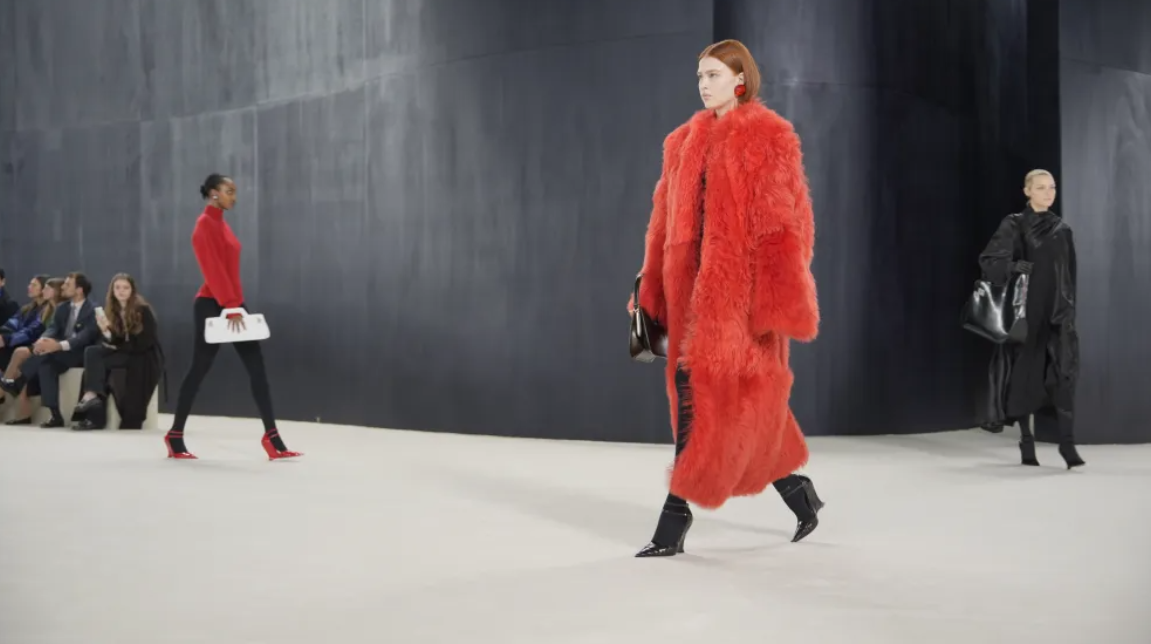Ferragamo Revenues Dip in Nine-Month Period, CEO Stands by Strategy
MILAN — “We see early sprouts, but they are good indications of future growth.”
Marco Gobbetti, chief executive officer and general manager of Salvatore Ferragamo, stood by the soundness of his strategy and his support of creative director Maximilian Davis while commenting on the performance of the company in the first nine months of the year, which showed a decrease in revenues.
In the period ended Sept. 30, sales were down 8.3 percent to 844.2 million euros compared with 920.7 million euros in the first nine months of 2022, partly impacted by a negative perimeter effect both at retail and at wholesale.
“We are pleased with the progress made, and there is a lot of support from the market,” said Gobbetti during a call with analysts at the end of trading in Milan on Thursday. “We knew this would be a year in transition, a foundational year.”
Davis was appointed to his role in March last year, and the impact of his designs “is starting to bear fruits, in terms of the brand, too, creating a lot of new energy,” said Gobbetti, adding the designs are contributing to recruiting new customers. “The performance of the brand before did not reflect a product renewal and we started losing clients some time ago,” admitted the executive. “The performance of the refreshed products is better than that of the continuative icons and of products that had not been renovated.”
Gobbetti said that Davis’ collection for spring “gained excellent resonance and visibility,” noting that the designer is a nominee of the 2023 British Womenswear Designer of the Year award that will take place in London in December. He also said that Ferragamo has entered the top 20 brand ranking of the third-quarter Lyst Hottest Brands Index for the first time.
The full potential of the changes will be evident in 2024, Gobbetti continued, also leveraging a “focus on the quality of sales and the rationalization of distribution networks.”
He noted that Ferragamo has continued to invest in the business, in communication and marketing initiatives, which are “key to strengthen the brand and create engagement with existing and new audiences,” citing the fall 2023 ad campaign. As part of a partnership with the Uffizi Gallery, the campaign was lensed by New York-based photographer Tyler Mitchell, and is set against Renaissance artworks from the 15th and 16th centuries, all hanging on the walls of the 16th-century rooms of the museum in Florence.
Asked to comment on potential growth in 2024, Gobbetti said it was “too soon,” given the uncertain macro context in the U.S. and China, and the unforeseen impact of the tragic events in the Middle East, expressing his hope for peace at the beginning of the call. “The macro environment is the biggest challenge as are the geopolitical tensions. Luxury spending demands confidence.” He said it was premature to comment on the consensus of 100 million euros in operating profit. However, he did say that the company’s midterm ambition is confirmed. In May last year, Gobbetti said he was aiming to double Ferragamo’s sales in four to five years.
In the first nine months, retail sales were down 10.2 percent to 599.5 million euros compared with 667.6 million euros last year, representing 71 percent of the total, also penalized by a general softening market in the third quarter. Gobbetti said that 15 non-strategic stores will have been closed by the end of the year.
A new store concept will be rolled next year to “key cities and primary important locations,” beginning with Milan’s Via Montenapoleone womenswear unit.
“It is very important to protect investments in communication and CapEx, while protecting margins,” he offered.
Wholesale revenues decreased 16.6 percent to 217.2 million euros compared with 260.4 million euros due to the planned rationalization of Ferragamo’s third parties’ network, expected to be completed by the end of the year. “We are well ahead of our plans,” said Gobbetti, pointing also to the reduced international travel affecting the duty-free channel and the deceleration of the U.S. market. “The market has been affected by a slowdown in demand but we have been careful with inventories.”
Sales in the Europe, Middle East and Africa region rose 3.1 percent to 208.5 million euros, representing 25.5 percent of the total. “Local demand is weakening in Europe and given the current context we don’t see a potential major growth,” said Gobbetti. Tourists’ purchases in Europe made for “a good, solid season,” despite a normalization compared with “a phenomenal” 2022, he said.
Revenues in North America fell 20.1 percent to 221.1 million euros, representing 27.1 percent of the total.
“Sales in America were significantly impacted by a domestic slowdown starting from the second quarter,” said Gobbetti.
Sales in Japan were down 11.6 percent to 64.4 million euros.
Revenues in Asia Pacific, Ferragamo’s biggest market, fell 16.4 percent to 264 million euros, accounting for 32.3 percent of the total. “Chinese spending is still below pre-COVID[-19],” said Gobbetti, while noting he had seen “a bit of travel to Japan but very limited intra-Asia and extremely limited to Europe,” leveraging domestic consumption. Local spending in China softened in the third quarter compared with the second quarter, and uncertain demand in the summer was reported.
Sales in Latin America were down 3.1 percent to 58.8 million euros.
By category, sales of shoes were down 9.7 percent to 379.1 million euros, representing 46.4 percent of the total. Leather goods and handbags dropped 16 percent to 325.8 million euros, accounting for 39.9 percent of the total. “We are very pleased with the work on handbags, the architecture of the new collections are bringing results and we are excited about what is coming for pre-spring,” said Gobbetti.
Sales of ready-to-wear were down 9.7 percent to 54 million euros and silk and other accessories dropped 4.3 percent to 55 million euros.
Fragrances decreased 10.7 percent to 2.8 million euros.
